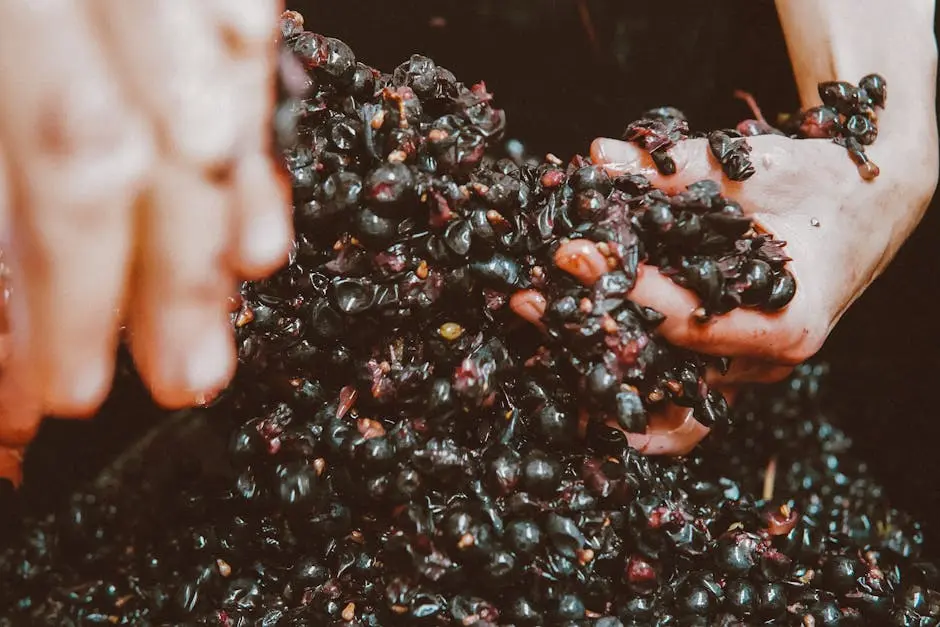Red wine is not just a beverage; it’s a journey from the sunlit vineyards to the sanctuary of a cellar, and finally, into your glass. The art of crafting red wines is a complex, yet fascinating process that blends tradition with innovation. This blog will take you through the meticulous journey of creating red wines, highlighting the passion and skill that goes into every bottle.
The Importance of Terroir in Red Wine Making
Terroir refers to the unique combination of soil, climate, and geography that influences the grape growing process. It plays a crucial role in defining the characteristics of the red wine, impacting flavor, aroma, and texture.
Each vineyard boasts its own special terroir, and this profoundly impacts the wines produced there. The mineral composition of the soil, the sun’s warmth, and the subtle microclimates create an identity for the wine, infusing each glass with a sense of place. This geographical fingerprint is why the same grape varietal can taste strikingly different when grown in contrasting regions. A wine enthusiast may taste the earthiness of a Bordeaux or the vibrant fruitiness of a California red, each offering a unique story from its roots.
Emphasizing terroir also means respecting the environment. Sustainable practices not only help in preserving the surroundings but also enhance the natural flavors of the grapes. For Lecavalier Cellars, this focuses on revolutionizing sustainability in their winemaking process, marrying traditional methods with innovative technology to create an unforgettable tasting experience. In essence, understanding terroir gives wine its starting note, leading into an exquisite symphony of flavors as it transforms from grape to glass.
Harvesting: Picking at the Perfect Moment
Timing is everything when it comes to harvesting. Picking grapes at their peak ripeness ensures that the right balance of sugars and acids is achieved. This balance is essential for creating high-quality red wines.
The decision on when to harvest is both a science and an art. Winemakers rely on various cues, both from technology and nature. Sugar levels are monitored using a refractometer, while acidity may be tested in labs. However, experienced vintners also trust the art of tasting; their expertise allows them to feel when grapes have attained the desired harmony between sweetness and acidity. This precision in timing is crucial, as premature or delayed harvesting can significantly alter the wine’s profile, either lacking in depth or tipping into overwhelming richness.
The significance of harvest timing is highlighted in regions known for their distinct seasonal shifts. In Napa Valley, for instance, the gentle squeeze of the grape between the fingers might reveal whether it’s time for Merlot or Cabernet Sauvignon. Whether done by hand or machine, this stage of winemaking sets the stage for the magic that follows. At Lecavalier Cellars, experience firsthand the importance of timing with our tastings showcasing the complete journey of the grape, from vine to glass.
The Fermentation Process: Transforming Grapes into Wine
Fermentation is where the magic happens—where crushed grapes turn into wine. This process involves converting the natural sugars in grapes into alcohol, influenced by yeast, temperature, and time.
Yeast, both natural and cultivated, play a pivotal role during fermentation. These tiny organisms feast on sugars present in the grape juice, resulting in alcohol and carbon dioxide. This transformation is far from simple, however, as the fermentation process varies widely between wineries and even between different varietals. Controlling temperature is key, as it affects how fast fermentation occurs and can influence the aromatic qualities of the wine, with cooler temperatures often encouraging more nuanced flavors.
The choice between wild or commercial yeast strains can also influence the wine’s personality. Some winemakers embrace the unpredictability of wild yeast for a more complex character, while others prefer the consistency offered by cultivated strains. This dance of nature and science embodies the essence of winemaking — a blend of tradition and innovation, very much like Wiens Cellars’ artistry in blending. For those crafting wine, these decisions shape each bottle, leading to an infinite variety of reds to delight enthusiasts.
Barrel Aging: Adding Depth and Complexity
Aging red wines in barrels is an art in itself. The choice of oak, the duration of aging, and the conditions of the cellar all contribute to adding depth, complexity, and a range of subtle flavors to the wine.
The type of oak used in barrel aging profoundly influences the final product. French oak, for example, tends to impart delicate notes of vanilla and spice, while American oak may add more intense flavors of coconut and caramel. Time is another crucial element; a longer aging period allows the wine to absorb more of the wood’s nuances, evolving in character as tannins soften and its bouquet becomes more intricate.
Seasoned winemakers regulate the conditions within the cellar to maintain ideal humidity and temperature levels, ensuring a slow maturation process. This delicate interplay of environment and time allows each wine to develop a unique depth and complexity. Highlighting the winery’s commitment to sustainable practices ensures each bottle is crafted with a nod towards preserving the earth for future generations of winemakers.
The Final Touches: Blending and Bottling
Before red wine reaches the bottle, decisions around blending are made to fine-tune flavors and ensure consistency. Bottling marks the final step where the wine is sealed, ready to be shared with the world.
Blending is the equivalent of painting with flavors, a meticulous practice that enhances complexity and ensures balance in the final product. During this stage, different barrels and varietals are strategically combined to harmonize the wine’s elements. Winemakers draw upon history and technique, echoing the art discussed in Wiens Cellars’ exploration of blending, ensuring each bottle reflects the vintner’s vision and the winery’s signature style.
Once blending is complete, wines are transferred to sterilized bottles where they’re corked, labeled, and readied for distribution. Each step from blending to bottling is handled with precision, as small variations can influence the wine’s longevity and taste. This conclusion of the wine’s journey from vineyard to glass embodies the dedication of winemakers like those at Lecavalier Cellars, offering an exquisite tasting experience that stands as a testament to the art of winemaking.
Celebrating the Craftsmanship of Red Wines
Crafting red wines is indeed an art form, deeply rooted in tradition yet constantly evolving with new techniques and flavors. From the careful selection of grapes to the nuances in fermentation, each stage is crucial in shaping the wine’s character. Whether you’re a casual sipper or an avid enthusiast, understanding this journey can enhance your appreciation for every glass of red wine you enjoy.



